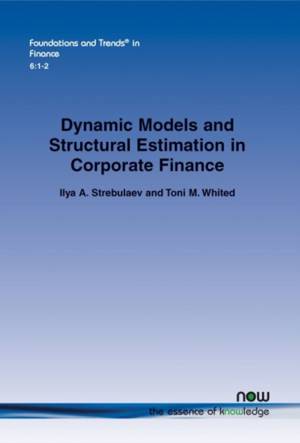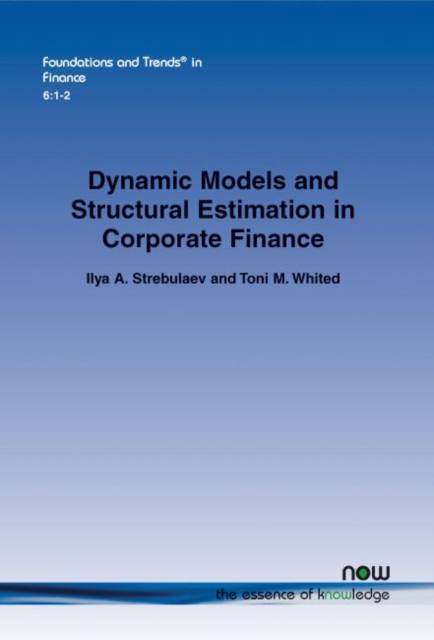
- Afhalen na 1 uur in een winkel met voorraad
- Gratis thuislevering in België vanaf € 30
- Ruim aanbod met 7 miljoen producten
- Afhalen na 1 uur in een winkel met voorraad
- Gratis thuislevering in België vanaf € 30
- Ruim aanbod met 7 miljoen producten
Zoeken
€ 138,45
+ 276 punten
Omschrijving
Dynamic Models and Structural Estimation in Corporate Finance has three goals: (1) To explain the models and techniques used in this literature as simply as possible, with the intent of making the literature more accessible. (2) To introduce the reader to the main strands of this literature. This monograph can therefore be viewed in part as a literature review and in part as a tutorial. (3) To explain how dynamic models can be taken to the data and be estimated with the intent to provide a practical, hands-on guide to three specific methodologies that have been used in the literature: generalized method of moments, simulated method of moments, and maximum simulated likelihood. Dynamic Models and Structural Estimation in Corporate Finance provides a concise guide to the extant structural estimation literature in corporate finance. Following an introduction, Section 2 provides an overview of dynamic corporate finance models based on techniques developed in the continuous time contingent claims literature. Section 3 covers a separate strand of the literature that stems discrete time investment models. Section 4 reviews the relatively small number of different econometric techniques that have been used to estimate these models, as well as the studies that have used them. The authors close with a brief overview of directions for future research.
Specificaties
Betrokkenen
- Auteur(s):
- Uitgeverij:
Inhoud
- Aantal bladzijden:
- 174
- Taal:
- Engels
- Reeks:
- Reeksnummer:
- nr. 21
Eigenschappen
- Productcode (EAN):
- 9781601985804
- Verschijningsdatum:
- 19/11/2012
- Uitvoering:
- Paperback
- Formaat:
- Trade paperback (VS)
- Afmetingen:
- 156 mm x 234 mm
- Gewicht:
- 254 g

Alleen bij Standaard Boekhandel
+ 276 punten op je klantenkaart van Standaard Boekhandel
Beoordelingen
We publiceren alleen reviews die voldoen aan de voorwaarden voor reviews. Bekijk onze voorwaarden voor reviews.











